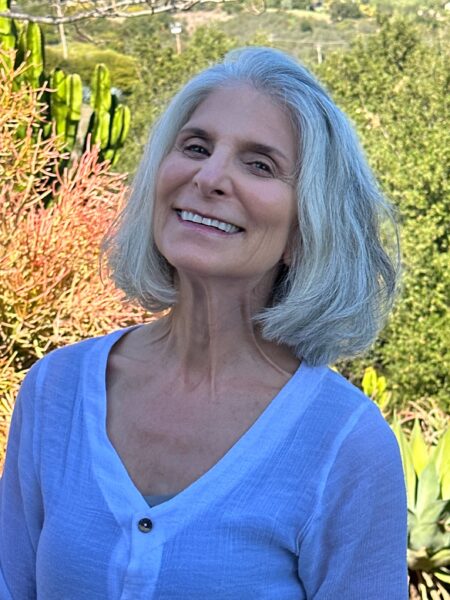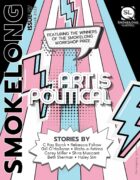I’m always interested in form; why is this story a flash?
I often think I’m making soup when I write flash, playing with different ingredients, the images, scenes, voice, and perspective. In flash, because the images are so compressed, they work on each other and bring out flavors that might otherwise have been hidden. So this could have become a short story, but I wanted that tight juxtaposition of images: the mother eating paper, the daughter eaten up in caring for Mother, the heron swallowing something so big, the gopher being swallowed whole. All the eaters and all the eaten right next to each other.
I was surprised at the end by the daughter’s actions. And pleased that she was not going to try to save Mother, that she had resigned herself to complicity with the paper-eating behavior. It was a little sinister, like adding a dash of hot sauce.
That’s interesting. I did not read the ending as sinister at all. I read it as a kindness—she gives her mother what she wants. Thoughts?
Yes, there is a bit of ambiguity. The daughter’s napkin gesture might be seen as kind—making peace with mother. Or perhaps the daughter is simply resigned and giving in to what her mother wants, opting out of more struggle or even another way of helping her mother. I also thought this was at cross purposes to caring for her mother, a bit of shadow in the daughter. To the extent that she enables paper-eating, she is furthering mother’s decline. I think many of our human responses have a multiplicity of motivations.
The gopher and the heron is an image that very much mirrors what it feels like to be a caregiver, as in, swallowed whole. Can you tell readers where this image came from?
I saw this on a walk in a field near my house. It was stunning and I watched for a long time as the great blue heron stood completely still, the gopher-bulge descending its throat. I worried that the bird had taken on too much, that it might choke. And I thought I had witnessed something extraordinary, something no one else had ever seen. I came home from my walk and wrote about it. As I researched however—I mean I had to know if I could learn anything about the gopher’s experience—I discovered that there are YouTube videos of herons eating gophers. They do it all the time.
In a writing task last January, Christopher Allen asked us to explore something familiar and defamiliarize it. While paper-eating is a known psychiatric illness, and, apparently, gophers are often eaten by herons, the two activities together defamiliarized each other for me.
There is a physicality in this story, a connection to the body. I love the musing, “What will paper do to her intestines.” Is the bodily connection related to your work as a therapist?
I do think my years of being a therapist informed the daughter’s wondering. She is not rushing Mother off to a psych hospital; she’s somewhat curious about what will happen if Mother keeps up paper-eating. I think that curiosity about human behavior and motivation served me as a therapist and serves me now in that I identify with the daughter’s musing.
And my own experiences witnessing people who do not always act in their own best interests came into play in this story. I enjoyed watching Mother’s consumption of paper without having to treat it.
Your bio mentions you garden. What speaks to you about gardening?
Often it is the surprise of new growth. But now in California, the land is very dry and new, hopeful shoots and buds do not seem to have a chance. Our cat is not a skilled hunter and no heron lands in our yard, so the gophers seem to have the upper hand.



 The core workshop of SmokeLong Fitness is all in writing, so you can take part from anywhere at anytime. We are excited about creating a supportive, consistent and structured environment for flash writers to work on their craft in a community. We are thrilled and proud to say that our workshop participants have won, placed, or been listed in every major flash competition. Community works.
The core workshop of SmokeLong Fitness is all in writing, so you can take part from anywhere at anytime. We are excited about creating a supportive, consistent and structured environment for flash writers to work on their craft in a community. We are thrilled and proud to say that our workshop participants have won, placed, or been listed in every major flash competition. Community works.